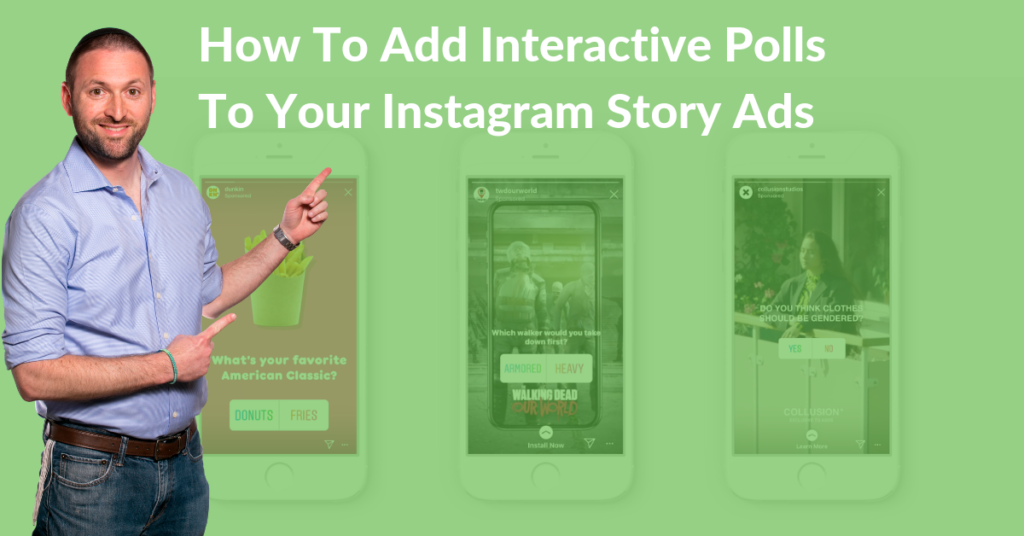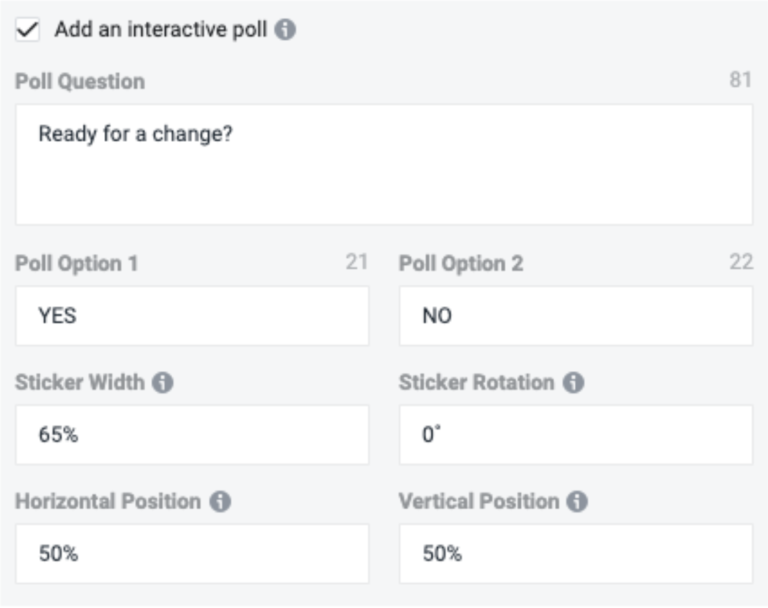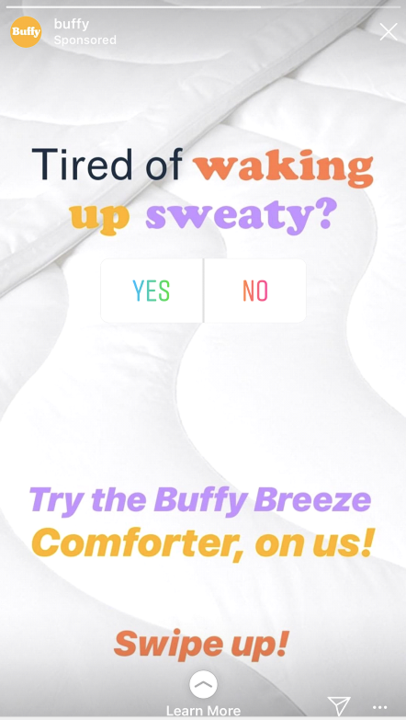If you’ve been monitoring the digital marketing landscape, there’s a good chance you know all about Instagram story ads.
And with good reason! Using Instagram ads, L’Oréal Paris was able to increase its purchase intent by 20%, as well as increase brand awareness by 13%.
But what you may not know is that Instagram recently released a new feature that allows you to include interactive polls as part of your story ads.
You’re even able to use emojis for these polls, which can be a powerful tool if you know your demographic will respond to them.
Setting Up Instagram Story Ads: Establish Poll Questions
Fortunately, creating an interactive story ad is pretty simple. Let’s start with the poll question.
In Ads Manager, choose Instagram Stories as your only ad placement. Then, where you upload your creative and edit your ad text, check the box “Add an interactive poll.”
Once you check the box, you fill out the poll the way you want to include the text. At this point, you can also include emojis here.
Ask a question or spark a debate. Speak your demographic’s language with emojis that perfectly capture how they feel. Find ways to elicit an emotional response and connect with your audience.
Positioning
It’s worth noting that you should be careful how you include the sticker as far as the positioning and size of your image is concerned. Use the positioning fields to move the buttons to the best location on your ad so you’re not covering an important part of the image.
It’s important to note that you do not have to include a question as part of the sticker. You can just leave it blank and use text that you already have on your image vs using the default font from ads manager.
Answer Options
What are some recommendations on how to best use the interactive poll feature?
- Co-create a product
- Spark a conversation with your community
- Crowdsource insights for product development
- Gamify your ad
It’s worth pointing out that the more divisive your question and answers are, the more likely people are to pay attention and actually vote.
If the options are between sleeping on rocks and sleeping on your mattress, consumers will be able to see right through your ad.
Don’t stick to simple, easy questions. Give your audience a real choice. Once they’ve made their choice, your audience will be able to see what percentage of total results their vote fell under, and how the other followers reacted.
Who knows? You might even learn something.
To give you a better idea of this, here are some of the examples of brands that have effectively used interactive polls for their Instagram story ads.
Buffy.co
When you’re in the mattress business, you’re blessed with a laundry list of customer pain points to choose from.
Because of this, Buffy uses a common problem for their target customer and asks a simple yes or no question. They choose to add the text to their image instead of using the default text using the poll feature and by doing so add a pop of color you would not get without it.
Moral of the story? Polls don’t have to be complex. They can be as simple as directly addressing customer pain points.
Trivago
Trivago is in a unique position. Not only are they looking to promote budget hotels, but they’re also looking to promote boutique hotels.
The beauty of this ad lies in its illusion of choice. After all, while this might be a legitimate question, there’s no denying that you’ll need to pick one of the two options (or something in middle). And when you’ve done that, you’ve done business with Trivago.
When the biggest objection to travel is the cost, Trivago manages to create a situation that makes travel a possibility, no matter the budget.
Use polls to reframe and eliminate pain points, all in just a few seconds.
Trivago uses its poll as a way to not only poll their potential audience using the Budget vs Boutique question but also as a way to showcase that they have options for every person.
Calm
And now, let’s take a look at how Calm masterfully uses emojis for their Instagram ads.
Instead of using words that might not fully capture how their audience is feeling, they stick to a simple smiling emoji and sad emoji.
It might not seem like a big deal, but it makes users ask themselves how they feel, which is always a step in the right direction.
When you’re crafting an ad, it’s important to keep in mind that less is more. Especially on an app like Instagram, attention is a precious resource.
Using the words “happy” or “sad” simply aren’t as visceral and authentic as a smiling/frowning emoji. And when you know your audience and your brand voice is well established, emojis can be exactly what your campaign needs.
The captions are definitely a nice touch, but the lesson to learn here is that words can’t always do your ad justice. Don’t be afraid to simplify and distill your ad to its base components.
What Happens Next?
Interaction polls are great for increasing engagement with your ads.
When someone touches one of the options, they are shown the percentage results of how people how voted so far. They aren’t directed to your landing page.
Here’s a before and after example that we recently made for a client.
Ultimately, if you want someone to visit your website, you’ll need them to swipe up. So don’t forget to add an extra call to action for them to “Swipe Up”.
Conclusion
On the surface, Instagram story ads might seem like just another digital marketing tool.
But the fascinating thing about Instagram story ads, particularly the polls, is the way they facilitate communication between users and businesses.
Polls don’t just give you insight into what your users are thinking. They give you a chance to reframe your CTAs, and address customer pain points in unique ways.
And when you’re able to leverage that power, there’s no telling how successful your Instagram ads campaign can be.








